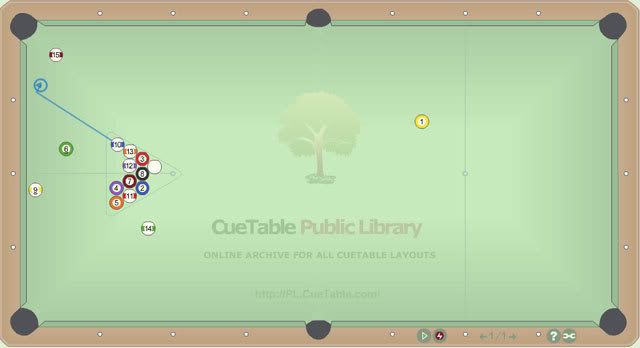With all the interest in 14.1 on the board lately, I figured I'd try to contribute. So here's some more tips and ideas I'd like to share. This might not be as well presented as some of my other threads on this (and threads by blackjack and sjm, in particular), because it's more just a collection of various ideas I want to convey.
First I'd like to apologize because I don't know how to insert the new wei table into a post. If someone would kindly tell me, I'll edit this post. The WEI tags in AZ seem to only work with the old table, which isn't exporting the 9-ball properly no matter what I do. Sorry.
1)
Faced with a tough shot
http://CueTable.com/P/?@2AKGU4BCYH3...HAUH4ICrh3JFrl4KDvW3LBrW3MEdV4NKAA3OWjI3PBis@
From this position, you simply must take two fouls by tapping the cueball. The beauty of it is that your opponent is doing the right thing by taking them right back. You are faced with a very, very difficult shot, with a make-percentage definitely under 50%. There is no safe.
You are essentially conceding to eventually taking the shot, but at least you've built in the equity that if you make it, you have an opponent on two fouls.
I am going from memory here, so I'm assuming that a make-percentage on something like this would be about 30%. If I'm wrong and upon setting it up on a real table it looks like my percentage would be significantly under that, I'd consider taking the third foul. But with chances of around 30%, taking the third foul is a little too conservative for me, especially with the added equity of having an opponent on two if I were to make it.
If your opponent elects to shoot this, well, tell him to have at it. You've gotten your opponent to shoot a shot he's going to miss more than half the time. Nothing wrong with that. This is why it's right for him to pass the shot back to you. Even when faced with a dire situation, you can make the best of it with this strategy.
This is an especially useful play when you have just run a bunch of balls. Your opponent has been getting cold in his chair; there's no way he's getting up and making this. He'll give you the two fouls in a heartbeat.Steve
